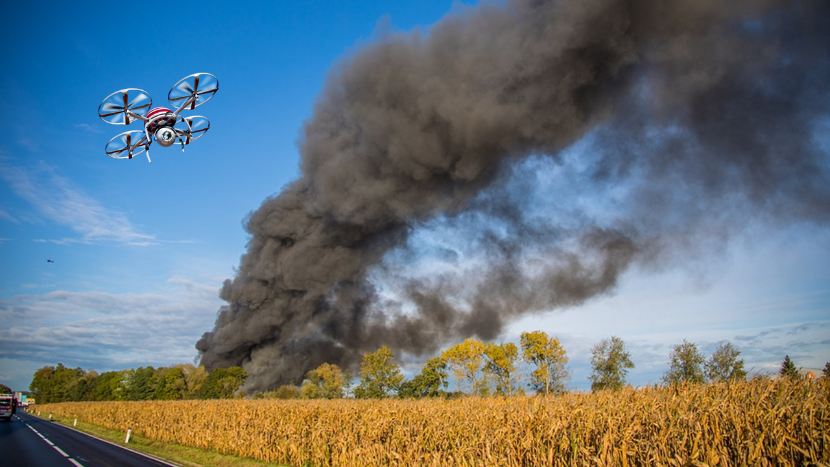“Running toward danger is foolhardy. But so is closing your eyes to it. Many perils become less dangerous once you understand their potential hazards.” — Brandon Mull
On Thursday, April 29, at about 2:30 pm, neighbors reported several explosions at the Manor Chemical Company in Affton, Missouri, a suburb on the southwest side of St. Louis.
Thirteen agencies in the St. Louis area responded, with a total of 62 trucks on the scene. By the time they arrived and deployed, at around 2:45 pm, the facility was on fire, with a huge cloud of thick black smoke enveloping the plant and surrounding community.
The top priority of the first responders was to evacuate neighbors to a distance of a half mile. The Affton School District held students, faculty, and staff until around 5 pm, sheltering in place.
There were no fatalities.
The three employees at the facility escaped unharmed, but one firefighter suffered exhaustion while pulling a large-diameter foam hose for hundreds of feet and was sent to the hospital.
The Manor Chemical Company
Manor Chemical Company is a solvent distributor. Their website lists 32 solvents—alcohols, aliphatics, aromatics, esters (acetates), glycol ethers, glycols, and ketones—all flammable, most with flash points less than 100°F. They also offer custom blends of the solvents that they sell, and manufacture adhesives. They package their products in quarts, gallons, 5-gallon cans, drums, and totes. Locally, they also make bulk deliveries in tank trucks.
At the time of the incident, local news media described the burning facility as a chemical plant. Perhaps “chemical plant” makes better copy than “solvent distributor”. The news reports stated that the fire involved one tank truck, about 10 “containers”, and the plant structure.
Cause of the Explosions and Fire
Employees at the facility speculated that the fire was the ignited by an electrical short or a discharge of static electricity in their adhesive process. The incident is still under investigation, but Affton Fire Chief Nick Fahs agreed that the fire was consistent with that explanation.
Use of Drones
Among the 13 fire departments responding to the four-alarm fire were the Mehlville Fire Protection District and the University City Fire Department, both of which brought their drones. The cameras on the drones allowed the incident commander to see aerial views of the fire before attacking the fire. Manor Chemical employees identified whether vessels were empty or not from the video feed, and what the contents of the vessels were. The drones also allowed the fire departments to get past the opaque black smoke and close enough to the fire to see where it had died down enough to allow firefighters to approach without going in blind.
As a result, the destruction was less extensive than it would have been had the fire department determined that the best and safest strategy was to the let the fire burn itself out while they prevented it from spreading to neighboring structures.
Fahs stated, “This was the first time I had ever used drone technology, and it gave us a tremendous advantage.” The Affton fire department is now planning to purchase its own drones.
Out of Harm’s Way
Many aspects of this fire were all too familiar—flammable liquids ignited by an electrical discharge, firefighters injured while responding to the fire—but the use of drones to fight the fire was a new twist.
Too often, the casualties of an industrial fire are firefighters. In this case, though, firefighters didn’t go in blind to attack the fire. Instead, drones did the reconnoitering, so the incident command was able to take advantage of the expert knowledge of Manor employees without putting anyone in harm’s way. Then, when they made the decision to attack the fire, firefighters went into a situation that was far less uncertain than most industrial fires. That immediate understanding of the hazards at the time made the response much safer.
Something Old, Something New
This fire reminds us that familiar hazards are still out there. When using flammable liquids, is the hazardous area classification being followed, and does all equipment—electrical equipment and fork trucks alike—comply with the requirements? Is all equipment bonded and grounded? Is grounding continuity checked? Are flammable mixtures with air avoided and LEL monitors in use? It’s been said that “familiarity breeds contempt”, so we must take special care to address the familiar hazards as well as the exotic hazards.
This fire also calls our attention to the changes that new technology brings. Every week, someone publishes a piece about how drones are being used to perform dangerous tasks that previously required putting personnel in harm’s way. Adopting this technology makes our workplaces safer. Consider how your organization can take advantage of drones and put this increasingly economical technology into place. You may even want to consider having it in place for emergencies, so that if your fire department shows up without a drone, they can borrow yours.
